|
|
|
|
Products mentioned in this Article
|
|
|
|
|
|
|
|
|
 |
|
|
The Return of Mid-war Monsters
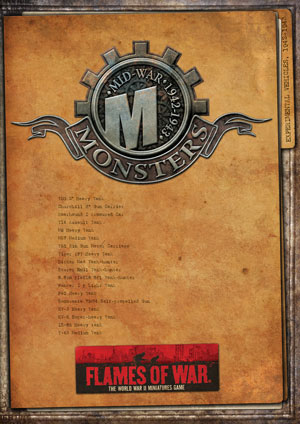 |
The Return of Mid-war Monsters
Why Mid-war Monsters?
In our research we have uncovered lots of really interesting experimental tanks. Some were just designs that were never completed. Others were completed as prototypes, and some even saw small-scale field testing!
These tanks were weird and wonderful, ranging from a 100-ton monster and a First World War relic, to a tank with two side-by-side main guns, an armoured car weighing more than a tank, and a machine-gun armed light tank with the armour of a heavy tank!
We wanted to try them all out to see how they might have performed if they had actually been built, so we decided to write some briefings for them, just for the fun of it!
|
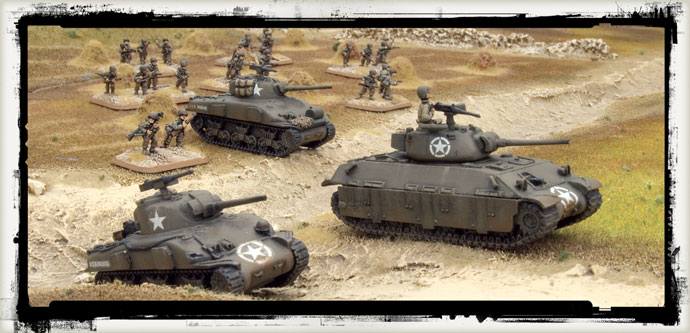 |
When To Use Mid-war Monsters
While here at Battlefront we love the idea of playing around with experimental tanks to see how they might have performed, some people don’t.
Please make sure that your opponent is into playing with experimental tanks before you add them to your force.
Aside from that, there is nothing to stop you from trying out the experimental tanks in any situation or scenario that you can come up with.
|
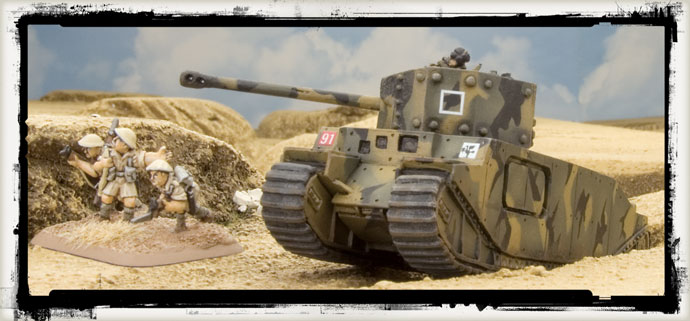 |
Combat Service
Most of the mid-war monsters never saw combat, in fact several of them were never even completed. It is interesting to speculate on what might have happened though, why an experimental tank might have made the jump from prototype to production, and where and how it would have seen combat if it did.
The Combat Service section of each tank’s description is a brief description of what might have been. A few of these experimental tanks did see combat in small-scale field testing. The Combat Service section of these is labelled as ‘Actual’ rather than ‘Hypothetical’ and they are marked with a ‘Combat Tested’ stamp.
■ Dicker Max and two Sturer Emil heavy tank-hunters were actually used in the Caucasus as described.
■ Four self-propelled 8.8cm FlaK18 Sfl fought with them in the Caucasus after fighting in Poland, France and the invasion of Russia.
■ At least a dozen Panzer I F were field tested in 1943.
■ The IS-85 heavy tank saw limited combat in early 1944 (although not in 1943).
■ Several T-43 medium tanks were tested in an experimental tank company.
The description of field testing for these tanks is actually true!
The Italian P40 heavy tank and Semovente 75/34 saw even more combat, just not with Italy’s Royal Army! After the Italian surrender, the Germans took over a number of these tanks, and then produced more of them for their own use.
|
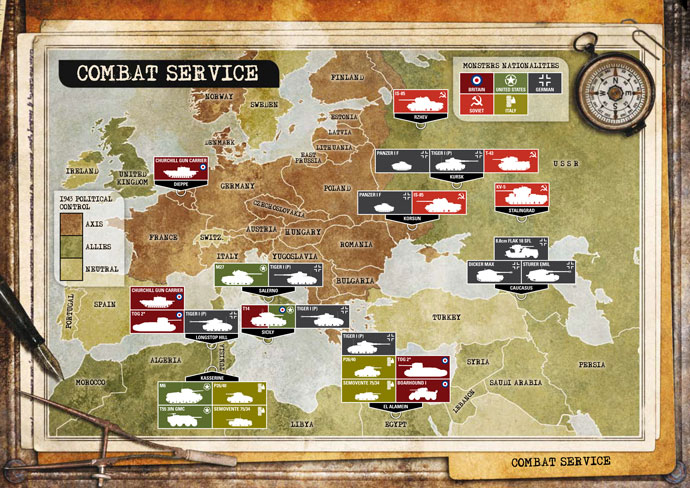 |
The World at War
Flames Of War allows you to take on the role of a field commander manoeuvring your troops across the battlefields of World War II, bringing this classic period of warfare to life in your own games room. With Mid-war Monsters you can test out the experimental super tanks of 1942 and 1943 to see how they would have performed if they had made it into production.
How to Field Mid-war Monsters
You can use this book to field experimental tanks in your normal mid-war Flames Of War force.
Use one of our Intelligence Briefings from North Africa or Eastern Front, or downloaded from our website, to form the core of your force. The experimental tanks can be used to replace more conventional equipment in your force. Each experimental tank describes the types of platoons and tanks that they can replace in its Replacing Standard Equipment section. As an example, the Churchill 3” Gun Carrier rules state that any British Rifle or Tank Company may replace any or all Infantry Tank Platoons with Gun Carrier Tank Platoons.
Experimental tanks used this way replace their standard counterparts, but otherwise follow the usual company structure and all of the rules applying to the force that they are part of.
Download the Mid-war Monsters mission pack here...
Platoons
Each experimental tank has its associated platoon structure and points cost depending on its strength and any additional options that you select.
The platoon diagram shows the tanks required to make that unit a combat-worthy force.
Special Rules
Experimental tanks are by their very nature unusual, in that they experiment with new ideas, technology and layouts. Many of the experimental tanks in this book have special rules that reflect their oddities.
|
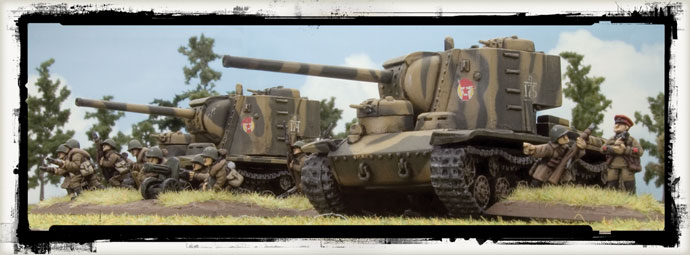 |
Tournaments
The following Mid-war Monsters can be used in any Flames Of War tournament:
■ Any German company may replace all of its Schwere Panzer Platoons with Schwere Panzer (Porsche) Platoons, and replace all Tiger I E tanks in the Company HQ with Tiger (P) tanks at no cost.
■ You may field Dicker Max and Sturer Emil in an Experimental Tank-hunter Platoon in place of a Tank-hunter Platoon in Eastern Front.
■ You may field 8.8cm Flak18 Sfl in a Bunker Flak Platoon in Eastern Front.
■ You may field Panzer I F in an Infantry Tank Platoon in place of an Assault Tank Platoon in Eastern Front.
■ A Soviet force, excluding a Mixed Tankovy Batalon, may replace any or all of its Medium Tankovy Companies with Eksperimental Tankovy Companies. If it is a Tankovy Batalon it can purchase the Command tank in the Battalion HQ as a T-43 medium tank for 95 points.
Mid War Monsters may be fielded in any tournament subject to the Tournament Organisers approval, for more information on how to add Mid-war Monsters to your company check out the How to Field Mid-war Monsters section above, as well as looking at the individual Mid-war Monsters PDFs. |
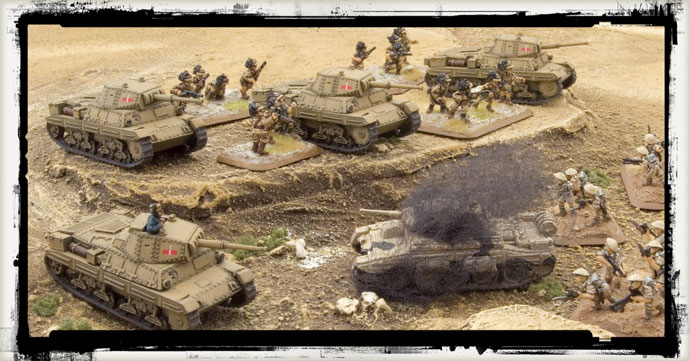 |
Research and Development
In modern industrial warfare tanks and other equipment are changing all the time. A tank that rules the battlefield when introduced finds itself overtaken by newer enemy designs the next year, and outclassed a year after that. Research and development of new technologies and weapons is essential to keep up with, and if possible lead, the latest developments on the battlefield. Every country approached the challenges of research and development differently. |
Great Britain: Eclectic Genius
British research and development was a mix of genius and bureaucratic blundering. There were some outstanding advances in military science in areas like radar and heavy bombers, yet they lagged behind in other areas like tank design. While the British could be immensely inefficient, such as designing their tanks in isolation from the guns that they would mount leaving them always one gun behind, they really excelled at cunning innovations in the field. The war in Egypt saw the first effective mine-clearing flail tanks and the ultra-secret CDL (Canal Defence Light) tanks designed to blind the enemy with strobe lights at night. At the same time units experimenting in Britain produced the AVRE (Armoured Vehicle, Royal Engineers), the first dedicated engineering tank capable of performing a wide range of engineer tasks.
|
| British Mid-war Monsters (click on an image to learn more about each vehicle.) |
| TOG 2* Heavy Tank (BR141) |
Churchill 3” Gun Carrier (BR089) |
Boarhound I (BR359) |
|
|
|
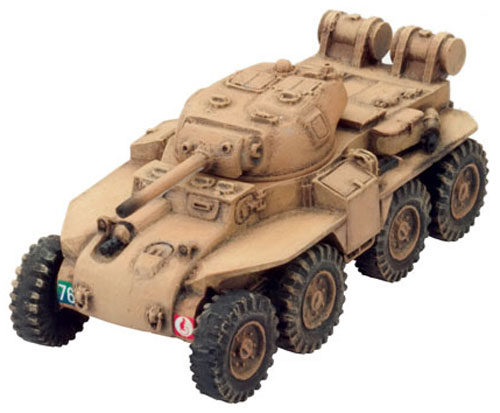 |
United States: Mass Production
By the time the United States entered the war, Europe had been embattled for more than two years. This put the States on the back foot in two ways: they needed to switch to military production, and they were behind in basic research in many areas. However, their great strength in mass production came to the forefront in resolving the first problem. As well as arming their own forces with the latest weapons such as the M1 Garand semi-automatic rifle, they shipped many thousands of standardised M4 Sherman tanks to their British and Soviet allies. The industrial and scientific power of America also allowed them to take British and French research in areas like ammunition, artillery, aircraft engines, and radar, to produce new and improved designs. The Bazooka is a perfect example of US innovation combined with French research. Goddard, an American inventor, had created a rocket gun at the end of the First World War. When they entered the Second World War, this was revived and modified to fire an experimental French anti-tank grenade, and the rest, as they say, is history.
|
| United States Mid-war Monsters (click on an image to learn more about each vehicle.) |
| T14 Assault Tank (US070) |
M6 Heavy Tank (US085) |
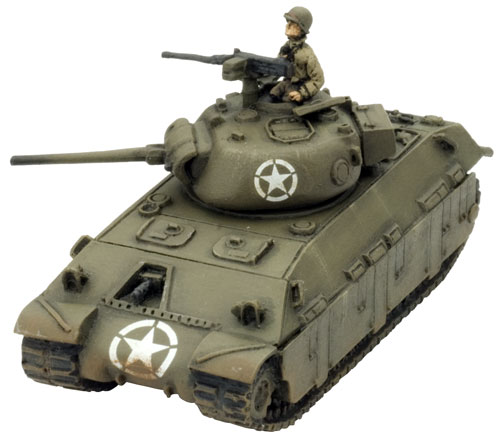
|
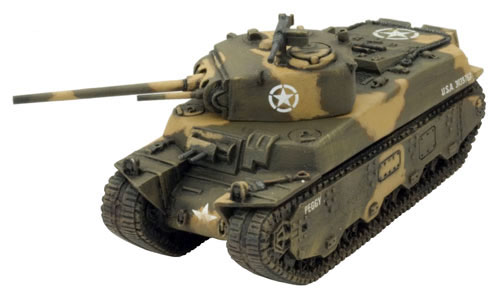
|
| M27 Medium Tank (US071) |
T55 3-in GMC (US110) |
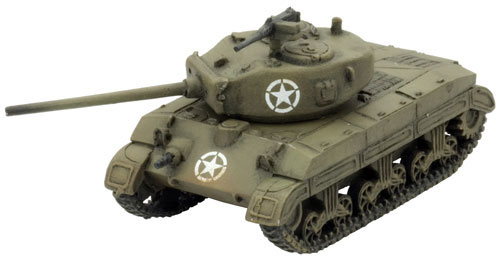 |
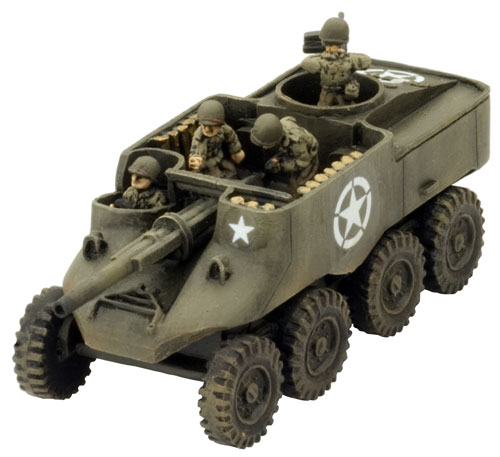 |
Germany: Engineering Perfection
Whatever else might be said about Germany’s weapons, they were engineering marvels. The leading armaments firms, Krupp and Rheinmetall for guns, and Daimler Benz, Henschel, MAN, and Porsche for tanks, competed to produce the best designs. Quality was superb, although costs were high and quantities small compared to their enemies. Still, while Germany was winning victory after victory, improved new designs for the future were more important than more tanks immediately. The Red Army gave the Germans a shock. No matter that they had destroyed more divisions than the Soviets started the war with, there were even more still to fight. Germany responded with a combination of cheap and innovative weapons like the disposable Panzerfaust anti-tank launcher and the StG44 assault rifle, and ever more sophisticated, specialised, and expensive weapons like the Sturmtiger-a bunker-busting mammoth mounting a 380mm rocket launcher!
|
| German Mid-war Monsters (click on an image to learn more about each vehicle.) |
| Tiger (P) Heavy Tank (GE076) |
Dicker Max Tank-hunter (GE115) |
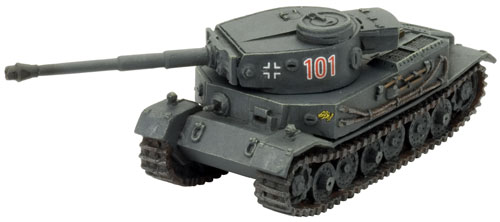 |
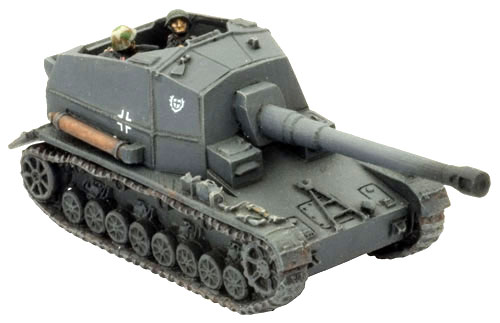 |
| Sturer Emil Tank-Hunter (GE116) |
8.8cm FlaK18 Sfl Tank-hunter (GBX42) |
Panzer I F Light Tank (GE007) |
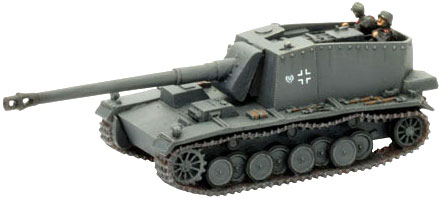 |
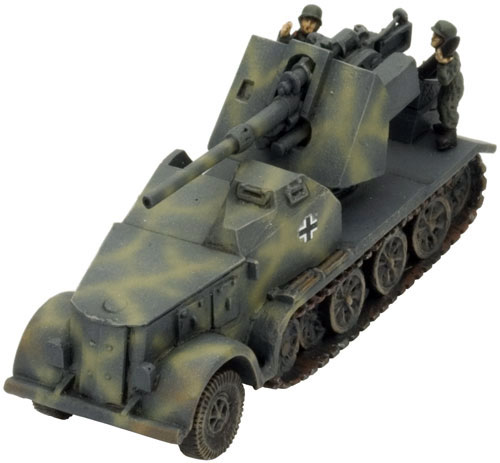 |
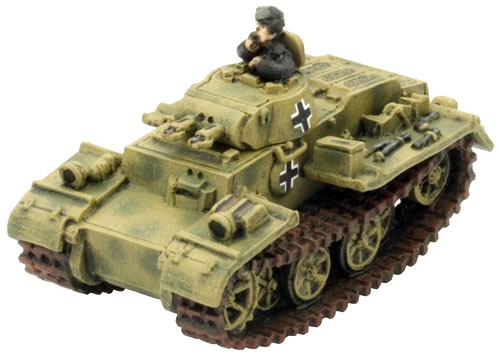 |
Italy: A Minnow amongst Sharks
When Italy entered the war in June 1940, it thought that Germany had all but won. Things might have gone well in a short war, after all its newest designs were a match for any enemy light or medium tank. Unfortunately for Il Duce’s dreams of glory, the war lasted much longer than the hoped-for few weeks. While Italian engineers produced good designs like the P40 heavy tank and the Semovente 90/53 self-propelled gun, Italian industry could not keep up. By the time these designs entered production after innumerable delays, their opponents were one step ahead.
|
| Italian Mid-war Monsters (click on an image to learn more about each vehicle.) |
| P40 Heavy Tank (IT045) |
Semovente 75/34 Self-propelled Gun (IT112) |
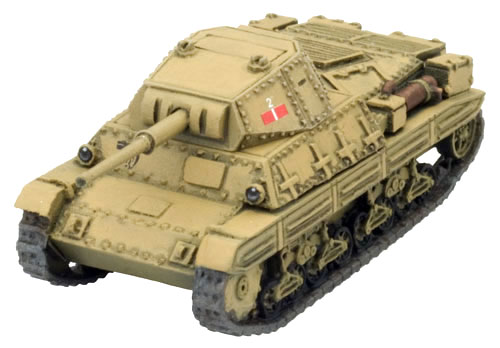 |
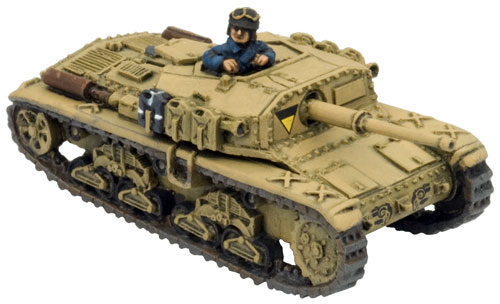 |
Soviet Union: Communism Survives
Between the wars Soviet scientists perfected many weapons systems years ahead of the rest of the world. When Germany invaded the Soviet Union in 1941, their army was surprised to encounter massed rocket launchers and heavy tanks that were almost invulnerable to German anti-tank weapons. As well as these new designs, there were many more just waiting in the wings, including medium tanks that were more powerful than any other country’s heavy tanks, superheavy tanks that dwarfed anything in production, and anti-tank weapons of incredible power. All of this cleverness came to naught in the first months of the invasion. The Red Army was totally outclassed, despite its technological advantages.
The resulting loss of most of the Soviet Union’s industrial cities meant that further scientific advances took a distant second place to simply producing more of existing designs. Here Soviet engineers showed their excellence again, rapidly producing enough equipment to rebuild the enormous Red Army. By the end of 1942 new designs like the T-43 medium tank and IS‑85 heavy tank were being contemplated again.
|
| Soviet Mid-war Monsters (click on an image to learn more about each vehicle.) |
| T-43 Medium Tank (SU065) |
KV-3 Heavy Tank (SU085) |
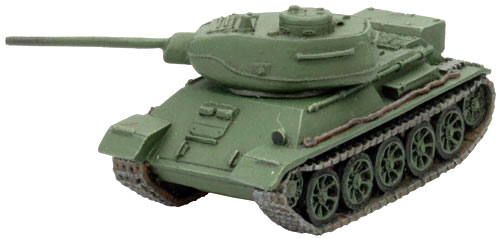 |
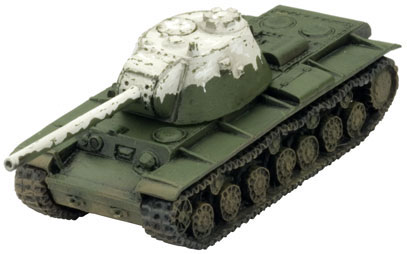 |
| KV-5 Super-Heavy Tank (SU086) |
IS-85 Heavy Tank (SBX08) |
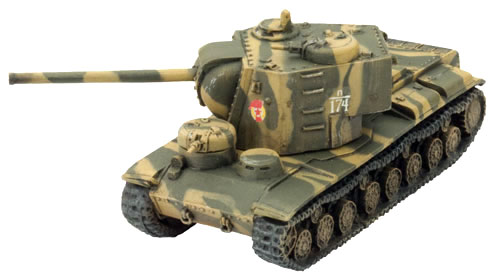 |
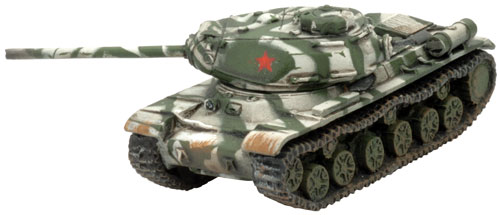 |
| Other Mid-war Monsters (click on an image to learn more about each vehicle.) |
| 40M Turan I & 41M Turan II (HU030) |
TACAM T-60 Tank-hunter (RO100) |
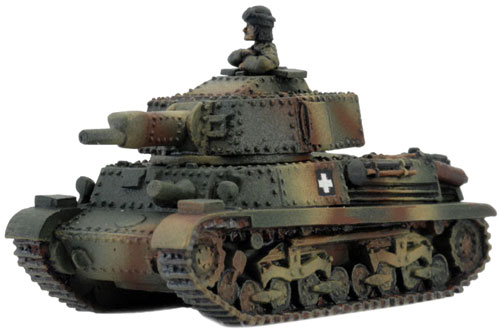 |
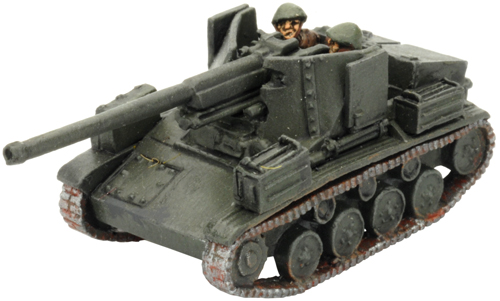 |
Last Updated On Tuesday, May 21, 2013 by Blake at Battlefront
|
|
|